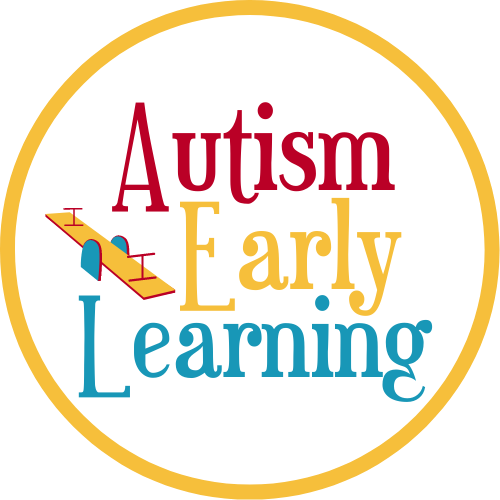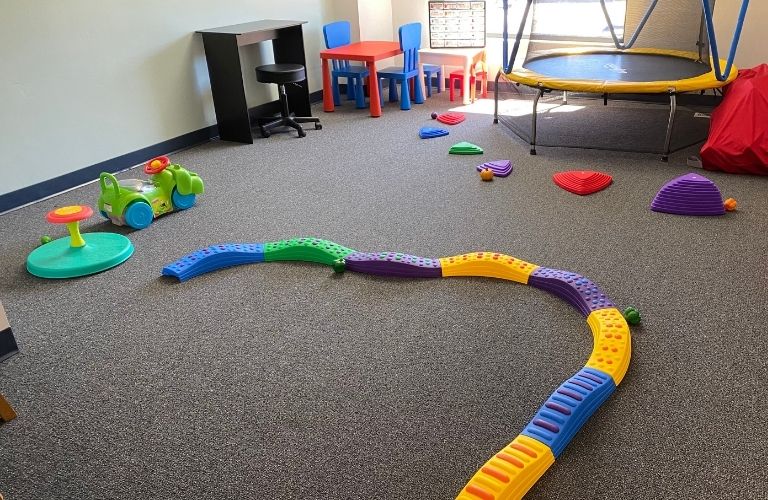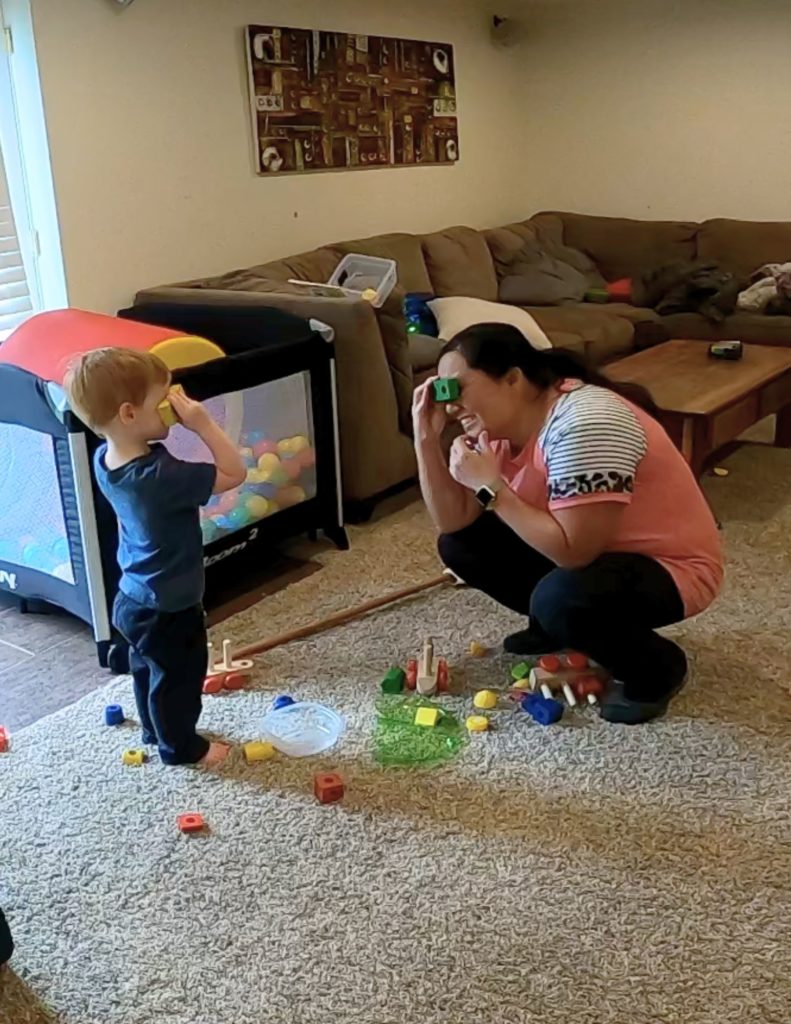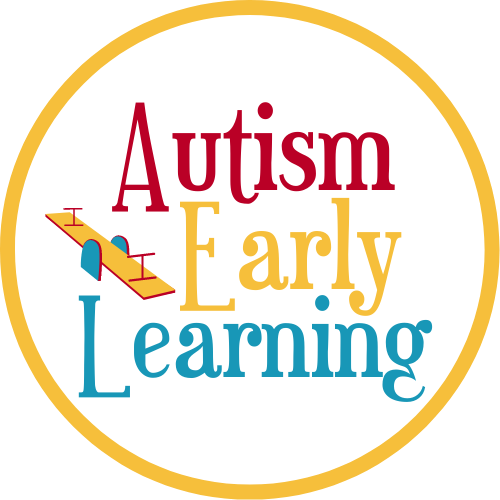First off, what is a gross motor skill? Gross motor skills are activities that involve the large muscles of the body.
In child development, it’s so important to be exposed to activities that help develop all the muscles in their bodies. As adults we try implementing exercise regimens, but even as adults we have a really hard time with that.
So as always, we want to find fun and interactive ways to help kids succeed whether it’s academically or whether it’s in developing gross motor skills.
One of my favorite ways to implement gross motor skills is by creating an obstacle course. It really doesn’t matter how young or old someone is, kids of all ages love obstacle courses.
I literally make an obstacle course every week in my class.
One of the many things I love about obstacle courses are that they can be different every time. Kids can help create them too (which works on even more skills).
Another thing I love is that you can just use things around the house. I am fortunate enough to work at a clinic designed by an Occupational Therapist, so our equipment is pretty awesome, but it’s so easy to just use pillows, blankets, tape, chalk, or anything else at home to make an obstacle course.
What you want to think about when you’re making a course is what is your purpose? Here are some ideas of why you might want to do an obstacle course.
- Just for fun
- Gross motor skills
- Problem solving
- Language skills
- Engagement
- Circles of Communication
- Perceptual motor skills
- Executive functions
- Planning
- Attention
- Organization
- Response inhibition
- Math skills
Whether you’re working on gross motor skills, or if there’s a different developmental skill you want to target, this activity is great for so many reasons!
It’s adaptable, so be flexible depending on who you’re working with, and what stage of play the child is at.
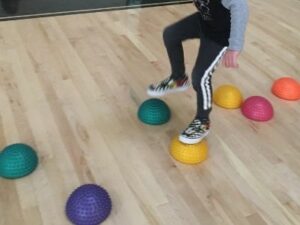



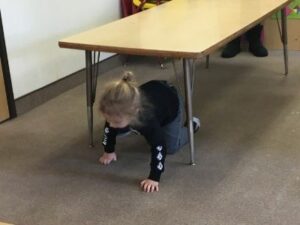
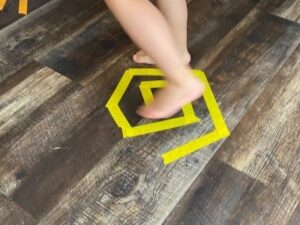
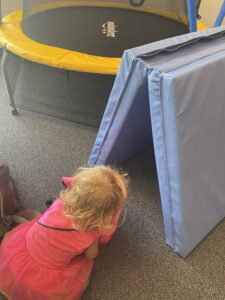

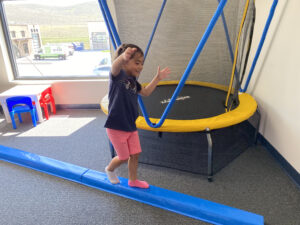
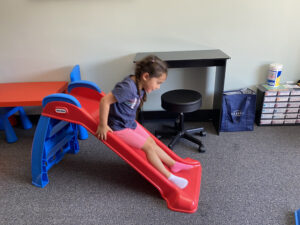

Supply Ideas
- Pillows
- Blankets
- Stepping Stones
- Hula Hoops
- Colored Tape
- Bubble Wrap
Instructions
- Have your child help gather supplies and help create the obstacle course. This will give some good heavy work, problem solving, and cooperation.
- Find ways to implement a variety of movement. Jumping, crawling, spinning, balancing, running, climbing.
Extra Tips & Ideas
- I’ll share more tips and ideas in the Early Intervention Tutorials. Check them out here: autismearlylearning.com/ei-tutorials-info
Access The Full Tutorial
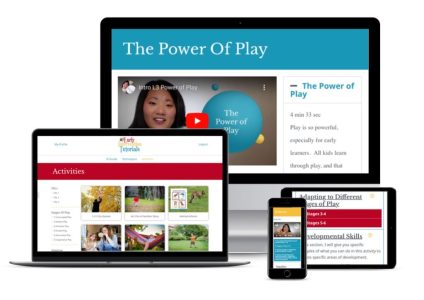
To gain full access to this tutorial and 70+ other activity and technique tutorials, become a member of The Early Intervention Tutorials
As a member of the EI Tutorials, you will learn how to:
- Identify a child’s developmental level
- Understand the stages of play
- Learn how to help a child with limited play skills
- Implement specific techniques to increase communication and engagement
- Adapt activities to different stages of development
- Target specific developmental skills, including: communication skills, cognitive skills, executive functioning, motor skills, social skills, and adaptive skills
Adapting to Different Stages of Play
Depending on a child’s stage of development, you’ll want to adapt this activity based on goals that would be appropriate for the child’s growth.
The stages of play are:
- Stage 1: Unoccupied Play
- Stage 2: Solitary Play
- Stage 3: Onlooker Play
- Stage 4: Parallel Play
- Stage 5: Associative Play
- Stage 6: Cooperative Play
I’ll share ideas on how to do this in the Early Intervention Tutorials. You can become a member and gain access to this tutorial by going to: https://autismearlylearning.com/ei-tutorials-info/
Developmental Skills
In this section, I’ll identify which areas of development this activity targets. I’ll also give some pointers on how to specifically target each area. You can become a member of the Early Intervention Tutorials by going to: https://autismearlylearning.com/ei-tutorials-info/
Downloads
- Printable Lesson Plan (only available in the EI Tutorials)
- Obstacle Course Cards (only available in the EI Tutorials)
Links
As a Walmart Affiliate, I earn from qualifying purchases at no cost to you.
- Indoor Trampoline-If you have room for an indoor trampoline like this, I would highly recommend it. Great for bad weather days. We had this one at a clinic I worked at, and kids loved it.
- Little Tikes Trampoline-Here is a smaller option
- Roller Coaster Ride-These are so much fun! If you don’t want to spend as much money, check out FB Marketplace, I oftentimes see them there, but they go fast.
- Sit ‘n Spins are a fun vestibular toy and works on motor skills as well, including bilateral coordination, balance, and gross motor.
- Ball Pit Tunnel and Tent-I haven’t used this specific toy, but ball pits and tunnels in general are great proprioceptive activities
- Scooter Board-There’s so much you can do with a scooter. They’re great for motor planning, vestibular input, proprioceptive input, and more.
- Indoor slide
- Balance Pods-These are great for obstacle courses inside or out. I’m not sure what brand I have, but they look like this
- Balance Beam-You can set it up different ways kind of like a train track. These are great for a lot of different skills.
- Cones, rings, and beanbags-There’s a lot you can do with this yard game set
- Balance board
- Colored Masking Tape-Tape on the kitchen floor is an easy way to create an obstacle course. Balance on the red, spin on the blue, jump to the blue, etc.
- Sidewalk Chalk-Make an obstacle course in your driveway with sidewalk chalk. First, work on fine motor skills with drawing and then work on gross motor skills with running, jumping, spinning, and balancing.
- Hopper-If your child is bouncing off the walls (literally), these are fabulous for getting some of those wiggles out. It does require some coordination and body awareness though
- Large soft blocks-These are great for building and knocking down. You can knock them down by running into them or throwing a ball at them.
- Tunnel-Crawling is such a good and necessary activity for motor development. I don’t have this exact tunnel, but I have one that looks just like it 🙂 Any tunnel will do.
